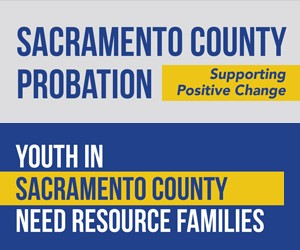Age of Majority Unit
Age
of Majority Unit (AOM) is a specialized field unit providing case management
services and support to youth people ages 18-21 under the jurisdiction of the
Juvenile Court. The target population includes youth adults who are not
currently enrolled in High School or have already obtained their diploma. These
young adults receive a Level of Service/Case Management Inventory (LS/CMI)
assessment and case planning that includes referrals to services to meet
identified needs. Referrals are focused on specialized treatment, education,
vocational training, and other supports as needed, such as food and emergency
housing. The goal of the AOM is to provide clients with assessment, treatment,
supervision, and support necessary to promote rehabilitation and to prevent
re-offending, resulting in a safer community.
Juveniles Who Sexually Offend (JSO) and Arson Unit
Youth adjudicated for a violation of Penal Code §288, arson, or a reasonably related offense are placed on a specialized caseload. This caseload is managed by the JSO and Arson Unit in collaboration with treatment providers (when applicable) and the parent/legal guardian(s).
Sexually abusive justice-involved youth participate in outpatient treatment designed to reduce the likelihood of re-offense and promote prosocial development. These youth are provided multiple assessments to inform individualized treatment plans, treatment progress and timing of termination services. The treatment plans generally combine individual and group treatment sessions, relapse prevention strategies and family counseling to support successful program completion. Consistent with best practices, probation officers work in collaboration with treatment providers and families and maintain weekly contact to monitor each juvenile's progress, ensure their needs are being met and ensure they are in compliance with the terms and conditions of their probation.
Valley Oak Youth Academy - V.O.Y.A. (Formerly Division of Juvenile Justice DJJ) Reentry Reentry and Supervision Program
V.O.Y.A Reentry and Supervision Program is a specialized unit for youth returning to the community from V.O.Y.A. At point of commitment, the probation officers and a V.O.Y.A Liaison begin an orientation phase wherein the youth are educated about what to expect at V.O.Y.A, how their program will progress, and the opportunities that lie therein. Three months prior to community re-entry, the assigned officer convenes a re-entry team to begin transition and case planning. The officer meets with the youth at V.O.Y.A and coordinates efforts with the Reentry team to include family if applicable. Upon reentry, the officer provides supervision, services and support to the youth in the areas of treatment, housing and education/vocation opportunities. Youth also meet with an eligibility specialist through partnership with the Probation's Adult Day Reporting Centers.
Black Child Legacy Campaign (BCLC) - Joint County/Community Collaboration
In the spring of 2011, the Sacramento County Board of Supervisors received a 20-year report on Sacramento deaths for the period 1990-2009. The report included a consistent finding that African-American children in Sacramento County died at disproportionately higher rates when compared to children of other races. In the fall of 2015, a strategic plan to reduce preventable African-American child deaths related to prenatal conditions, sudden infant death, abuse and neglect and third party homicide was presented by the Black Child Legacy Campaign (BCLC) Steering Committee and approved by the Board of Supervisors. The BCLC Steering Committee's subsequent implementation plan identified six core objectives, based on the principles outlined in the strategic plan. Probation Officers are embedded in the CIL-MDT community sites and collaborate with each incubator site to provide support, supervision and resources to youth participating in BCLC's prevention and intervention efforts.
Placement Services
4100 Branch Center Road
Sacramento, CA 95827
Phone: (916) 875-0523
Fax: (916) 876-5320
(Driving Directions)


“The vision of Placement Services is that all youth in our care will be empowered, safe, healthy, and achieve timely permanency. We value consumer voice and choice, collaboration, trauma informed care, and the power of relationship." ~ Shaunda Cruz, Chief Deputy
Family maintenance is the primary goal of rehabilitation; however, there are circumstances wherein the Juvenile Court orders removal and entry into a Foster Care setting which may include a resource family or a short term residential therapeutic program (STRTP) within the State of CA. The Probation Placement Services Division (Placement) is responsible for the supervision of these youth.
The children's services Continuum of Care Reform (CCR) efforts launched by the State in 2012 produced recommendations aimed at improving outcomes for youth removed from their homes and placed in congregate or foster care. In 2015, Assembly Bill (AB) 403 was approved by the Governor to further CCR efforts. Under the new law, group homes were restructured to comply with new licensure requirements to provide short-term specialized and intensive treatment and will only be used for children whose needs cannot be safely met initially in a family setting. Services are designed to transition youth back home or to another permanent family as soon as possible. All placement decisions utilize the Child and Family Teaming process.
The California Department of Social Services (CDSS) continues to introduce new standards to counties as information surrounding AB 403 evolves; Probation, in collaboration with juvenile system partners, continues to employ changes brought about by AB 403 as new information and standards are released.
Consistent with the objectives of CCR and subsequent legislation the Family First Prevention Services Act (FFPSA) was signed into law as part of the Bipartisan Budget Act of 2018, Public Law (P.L.) 115-123 on February 9, 2018. FFPSA supports the use of evidence-based practices to promote the well-being of children, youth, and families and to prevent unnecessary foster care placements. FFPSA revised many sections of Title IV-B and IV-E of the Social Security Act, including federal payments for foster care and adoption assistance.
FFPSA Part IV implemented on October 1, 2021, seeks to enhance support services for families to help children remain at home and reduce the use of unnecessary congregate care placements by increasing options for prevention services, increased court oversight and aftercare requirements for placements, and heightens the requirements for congregate care placement settings.
Current placement options and aftercare services are summarized below:
Family Finding Model
Relative Placement
In-State Placement
In-State Placement focuses on placing youth in appropriate residential treatment facilities located within the State of California. Residential treatment facilitates must be designated as STRTPs in order to be utilized by Probation.
Resource Family Recruitment
In California, Resource Family Approval (RFA) unifies the process of caregiver approval for children & youth in foster care. Probation utilizes Resource families to provide care for foster youth in a homelike setting either as an initial placement or after the youth completes treatment at an STRTP.
Probation is recruiting Resource Families, formally referred to as foster families, for youth served by probation. A Resource Family provides a loving supportive home for a youth who is unable to return to their family home after completing congregate care treatment. The Resource Family and the youth in their care receive support from the Probation Resource Family Applicant Unit, the assigned probation officer, and a WRAP team. Additionally, the Resource Family receives a monthly stipend to assist with cost associated with caring for the youth. If you or anyone you know is interested in supporting a youth in reaching their full potential go to our website: FosterAYouth.net.
Foster Parent Recruitment, Retention and Support
Foster Parent Recruitment, Retention and Support (FPRRS) focus to recruit, retain and support foster caregivers through intensive family finding, removal of barriers, and other nontraditional outreach approaches to potential foster family homes, resource families, and relatives. Our goal is to increase home-based care capacity of those willing to accept a placement youth served by Probation. Officers' recruitment efforts include intensive family finding, community outreach, advertising, and social media campaigns. On June 30, 2020, the State supported efforts sunset; however, Probation is committed to our FPPRS efforts to increase home-based care inventory as an initial placement or a step down.
Group Home Monitoring
In July 2011, Placement implemented a progressive group home auditing program. As the CDSS Community Care Licensing only requires group homes and STRTP audits within the State of California every five years, and outside California every year, Probation developed audit standards to protect youth and insulate the department from liability. Placement officers audit group homes and STRTPs annually using high standards to ensure youth are safe and living in environments conducive to change that provide therapeutic, academic and recreational services consistent with case plans, and officers confirm the structure and supervision levels are appropriate. This model is also used to review new programs seeking to receive referrals from Probation, when an allegations against the STRTP is made, or when incidents involving any resident occur.
Re-Entry Development for Youth (REDY-Go)
REDY-Go is intentional coordination for community transition and stabilization through a comprehensive assessment based on strengths and needs, development of individualized case and transition plan, community based service support and connection, and family engagement. As youth transition from a placement setting, the re-entry process provides the necessary continuity of care addressing treatment needs and other factors that have the most significant impact on re-entry success.
AB 12 (Extended Foster Care)
Foster care provides resources for non-minor dependents (450 WI) or Extended Foster Care (EFC) youth whom would normally exit placement without any assistance, services or reunification with parents or legal guardians. The goal of AB 12 is to ensure this population leaves foster care with the practical skills to achieve their potential and succeed in life. The initiative focuses on providing a safety net of financial assistance, services and ongoing support to these young adults as they age out of foster care. Placement currently has officers assigned to manage the unique challenges of this population by providing case management and supervision to these young adults as they transition to adulthood
Visit the California Department of Social Services website for more information.
Family Urgent Response System (FURS)
FURS is a coordinated statewide, regional, and county-level system designed to provide collaborative and timely state-level phone-based response and county-level in-home, in-person mobile response during situations of instability, to preserve the relationship of the caregiver and the child or youth.
Visit California Family Urgent Response System (Cal-FURS) for more information.
Neighborhood Alternative Center (NAC)
The NAC provides prevention and early intervention services to at risk youth. For more information check out the Neighborhood Alternative Center webpage.
